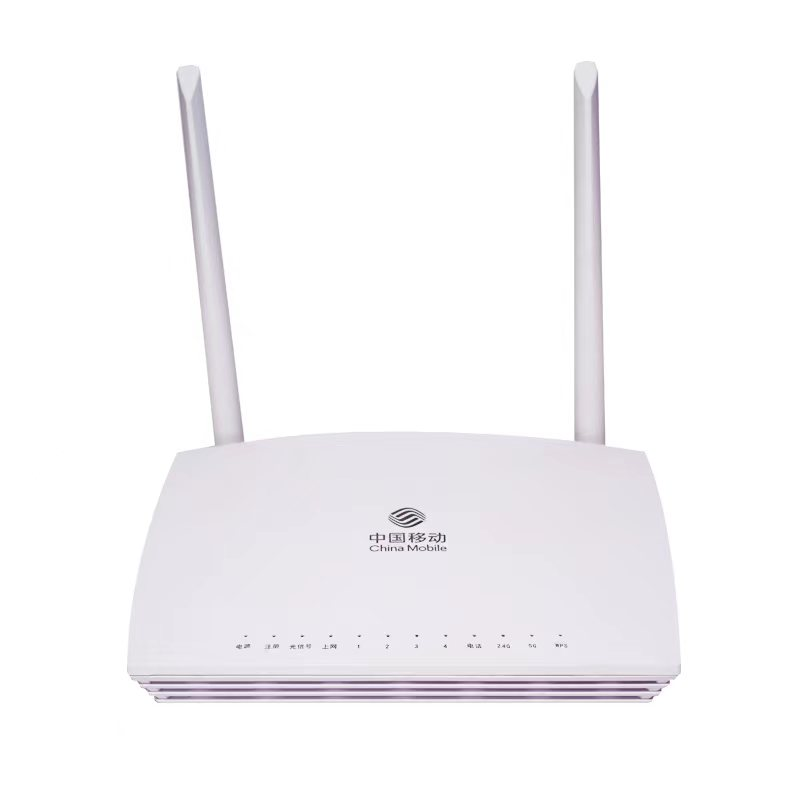Compared with previous generations of WiFi technology, the main features of the new generation of WiFi 6 are:
Compared with the previous generation of 802.11ac WiFi 5, the maximum transmission rate of WiFi 6 has been increased from 3.5Gbps of the former to 9.6Gbps, and the theoretical speed has increased by nearly 3 times.
In terms of frequency bands, WiFi 5 only involves 5GHz, while WiFi 6 covers 2.4/5GHz, fully covering low-speed and high-speed devices.
In terms of modulation mode, WiFi 6 supports 1024-QAM, which is higher than 256-QAM of WiFi 5, and has higher data capacity, which means higher data transmission speed.
Lower latency
WiFi 6 is not only an increase in upload and download rates, but also a significant improvement in network congestion, allowing more devices to connect to the wireless network and have a consistent high-speed connection experience, which is mainly due to the MU- MIMO and OFDMA new technologies.
The WiFi 5 standard supports MU-MIMO (multi-user multiple-input multiple-output) technology, which only supports downlink, and can only experience this technology when downloading content. WiFi 6 supports both uplink and downlink MU-MIMO, which means that MU-MIMO can be experienced when uploading and downloading data between mobile devices and wireless routers, further improving the bandwidth utilization of wireless networks.
The maximum number of spatial data streams supported by WiFi 6 has been increased from 4 in WiFi 5 to 8, that is, it can support a maximum of 8×8 MU-MIMO, which is one of the important reasons for the significant increase in the rate of WiFi 6.
WiFi 6 uses OFDMA (Orthogonal Frequency Division Multiple Access) technology, which is an evolved version of the OFDM technology used in WiFi 5. It combines OFDM and FDMA technology. After using OFDM to transform the channel into a parent carrier, some subcarriers The transmission technology of uploading and transmitting data allows different users to share the same channel, allowing more devices to access, with shorter response time and lower delay.
In addition, WiFi 6 uses the Long DFDM Symbol transmission mechanism to increase the transmission time of each signal carrier from 3.2 μs in WiFi 5 to 12.8 μs, reducing the packet loss rate and retransmission rate, and making the transmission more stable.
Larger capacity
WiFi 6 introduces the BSS Coloring mechanism, marking each device connected to the network, and adding corresponding labels to its data at the same time. When transmitting data, there is a corresponding address, and it can be directly transmitted without confusion.
Multi-user MU-MIMO technology allows multiple terminals to share the channel of the computer network time, so that multiple mobile phones/computers can surf the Internet at the same time. Combined with OFDMA technology, each channel under the WiFi 6 network can perform high-efficiency data transmission, improving multi-user The network experience in the scene can better meet the requirements of WiFi hotspot areas, multi-user use, and it is not easy to freeze, and the capacity is larger.
Safer
If a WiFi 6 (wireless router) device needs to be certified by the WiFi Alliance, it must adopt the WPA 3 security protocol, which is more secure.
At the beginning of 2018, the WiFi Alliance released the new generation of WiFi encryption protocol WPA 3, which is an upgraded version of the widely used WPA 2 protocol. The security is further improved, and it can better prevent brute force attacks and brute force cracking.
more power saving
WiFi 6 introduces the TARget Wake Time (TWT) technology, which allows active planning of communication time between devices and wireless routers, reducing the use of wireless network antennas and signal search time, which can reduce power consumption to a certain extent and improve device battery life.
HUANET provide WIFI 6 ONT, if you interested in it, pls contact us.
Post time: Dec-01-2022


